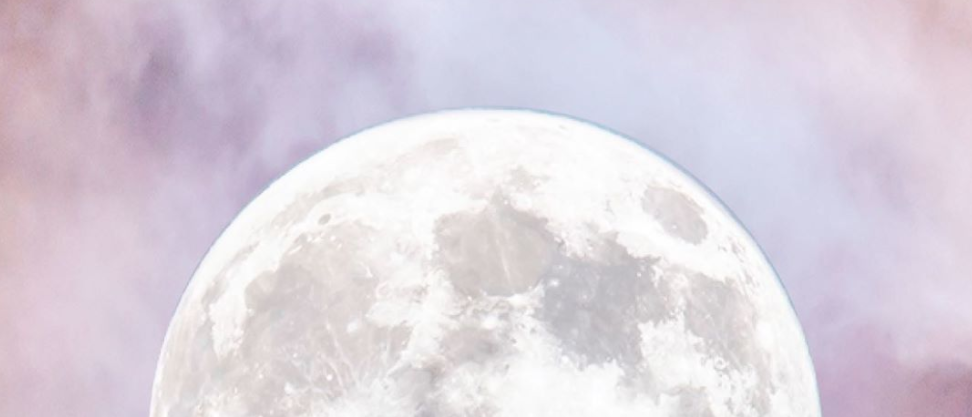
By Madison Mooney
The biggest supermoon of 2020, known as a Super Pink Moon, will occur on April 7. However, the “super” and “pink” features of this particular Moon will occur at different times in the night.
What is a Supermoon?
The Moon’s orbit around the Earth isn’t a perfect circle—it’s elliptical, meaning that the Moon moves closer and further away from the Earth throughout the path of its orbit. The term “Supermoon” describes any full Moon that occurs within 10% of its closest distance to Earth.

The technical term for a Supermoon is “perigee-syzygy of the Earth-Moon-Sun system.” Perigee is when the Moon comes closest to Earth in its slightly elliptical orbit around the Earth, and syzygy occurs when three or more celestial bodies are aligned in a straight line. Whenever the Earth, Moon, and Sun line up, it is either a new moon or a full moon. The full moon version of syzygy is also called “opposition” because the moon is directly opposite the sun as viewed from Earth.
Will the Moon really be pink?
Unfortunately, no. Traditionally, any full moon that occurs in the month of April is called a Pink Moon, because it marks the blooming of moss pink (Phlox subulata), a wildflower that is native to the eastern U.S. The full moon of each calendar month has a different name that is a cultural reference to things that occur in said month. For example, January has the Wolf Moon and February has the Snow Moon. These names come from many different origins, including Native American and medieval European culture.
How can I view the Super Pink Moon?
There will be two optimal times for viewing the Super Pink Moon. The first will be just after sunset on the evening of April 7. As the Moon rises, it will appear larger in size thanks to a visual effect often referred to as “the Moon Illusion.” Scientists aren’t exactly sure why this optical illusion occurs, but it’s incredible to see. The second optimal time for viewing will occur around 12 midnight, as the Moon will be at its highest point in the sky and at its fullest.
Join us for Shoot for the Supermoon 2020 on April 7!
Shoot for the Supermoon 2020 is a fundraiser for Lowell Observatory, the Home of Pluto and a 501(c)(3) nonprofit institution dedicated to astronomical discovery. Join us at 3:30pm-5:45pm AZ/PT (Pacific) on Tuesday, April 7, 2020, for live demonstrations of STEM activities for kids that you can do at home, and the launch of a new at-home science challenge for kids. This portion of the live stream is in partnership with AZ Gives Day (https://azgives.org) to raise funds for STEM education.
At 6pm AZ/PT, Lowell astronomers and educators will present exciting talks about lunar research and Apollo history, with occasional breaks showing live views of the Pink Supermoon and appeals to support Lowell Observatory and our new at-home science challenges for kids. The Shoot for the Supermoon fundraiser continues at lowell.edu/supermoon.
Moonrise is at 6:42pm AZ/PT here in Flagstaff, and astronomical full moon (syzygy) occurs at 7:35pm. This full moon is a supermoon because it occurs just over 8 hours after the moon has reached perigee, when it is at its closest point to Earth in its orbit.
